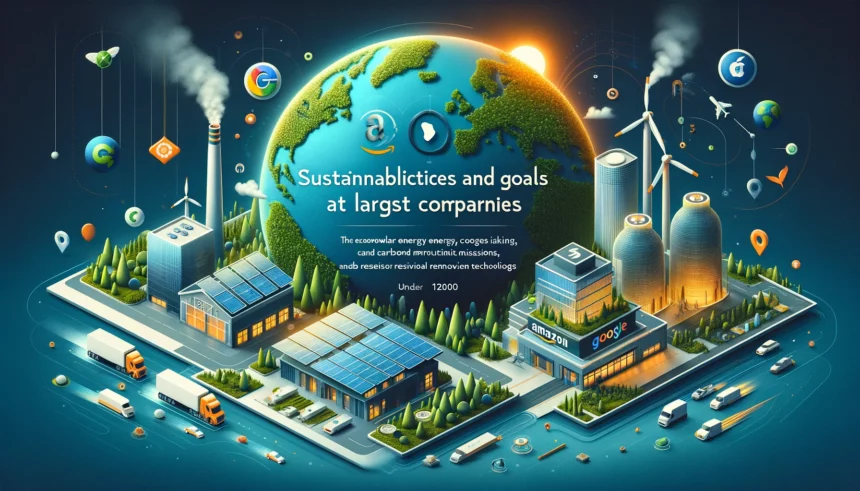Listen to the article now:
In the face of escalating environmental concerns, major corporations are under increasing scrutiny to adopt sustainable practices. Amazon, Google, and Apple, three of the tech industry’s giants, are pioneering efforts to curb their environmental footprints, setting ambitious goals, and making significant strides in sustainability.
Amazon’s Renewable Energy and Waste Minimization Initiatives
Amazon is advancing toward its commitment to power operations entirely with renewable energy, aiming to achieve this by 2025, five years ahead of its original schedule. In 2022, the company reported that 90% of its electricity usage stemmed from renewable sources, a milestone accomplished through over 400 wind and solar projects globally. Beyond these, Amazon is exploring innovative energy solutions like green hydrogen, collaborating with industry specialists such as Electric Hydrogen and Sunfire to enhance energy generation, storage, and use.
In its quest to minimize waste, Amazon is leveraging machine learning to refine packaging processes, reducing the use of single-use plastics by 11.6% across its operations in 2022. The company also achieved an 11% rate of package shipments without additional Amazon delivery packaging, showcasing its commitment to reducing excess waste and packaging materials.
Google’s Emission Reduction and Clean Energy Goals
Google has set an ambitious target to reach net-zero emissions across all operations and its value chain by 2030. The tech giant plans to halve its total Scope 1, 2, and 3 emissions by the end of this decade, compared to 2019 levels. Moreover, Google aims to operate on carbon-free energy 24/7 across every grid by 2030. As of now, Google boasts a 64% global average in carbon-free energy usage within its data centers and offices, demonstrating significant progress toward its goal.
Apple’s Carbon Neutrality and Environmental Strategy
Apple achieved carbon neutrality for its global corporate operations in 2020 and aims to extend this status across its entire value chain by 2030. The company is committed to a 75% emission reduction from 2015 levels by decade’s end, prioritizing emission cuts over carbon offsetting. Apple is focusing on product design, material efficiency, and process innovation to lower its carbon footprint, in addition to driving renewable energy transitions and emissions reduction within its supply chain.
Despite these efforts, unavoidable emissions persist, particularly those linked to renewable energy infrastructure. To address this, Apple is investing in carbon removal solutions, including the establishment of the Restore Fund with Goldman Sachs and Conservation International, aiming to remove significant CO2 amounts annually while benefiting communities and biodiversity.
In conclusion, Amazon, Google, and Apple exemplify how large corporations can play a crucial role in environmental stewardship. Their substantial investments and strategic initiatives in sustainability demonstrate a commitment to combating climate change, setting a benchmark for others in the industry.
















